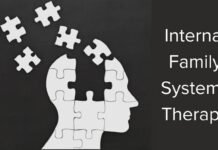Last Updated on March 12, 2024 by admin
Iron deficiency anemia is a common yet serious condition that affects people of all ages. It occurs when the body doesn’t have enough healthy red blood cells to transport oxygen throughout the body due to not having enough iron in the blood. This means, despite being something commonplace and manageable, it can lead to more complicated health problems if left untreated. For those unfamiliar with this condition, let’s dive into what causes iron deficiency anemia and how you should go about identifying and treating it effectively.
Table of Contents
What is Iron Deficiency Anemia and How Common is it Among Adults
Iron deficiency anemia is a condition where the body does not have enough red blood cells to carry oxygen throughout the body. This can lead to a range of unpleasant symptoms, including fatigue, difficulty concentrating, pale skin, and even heart problems if left untreated. Fortunately, this condition can be easily treated with iron that are available over-the-counter (OTC). Iron deficiency anemia is one of the most common medical conditions among adults, affecting an estimated 10% of women and 2% of men worldwide. Adequate iron intake through diet or over-the-counter is essential for overall health. Anyone who suspects they may be experiencing symptoms should consult with their doctor to determine whether over-the-counter iron supplementation might benefit them.
Symptoms
One of the most common symptoms associated with iron deficiency anemia is fatigue, which refers to a constant state of tiredness or lack of energy. Additionally, many people experience dizziness or difficulty concentrating when they suffer from this condition. Paleness of the skin is another symptom that could indicate low levels of iron in the body, as is shortness of breath while doing activities that were once simple to accomplish. Other signs can also include brittle nails, soreness in the tongue, and cold hands and feet. If you experience any combination of these symptoms for an extended period, consider talking to a doctor about possible iron deficiency anemia.
Causes
Iron deficiency anemia is a common type of anemia caused by insufficient levels of iron in the body. It affects several million people worldwide and can have serious health consequences if left untreated. There are a variety of causes of iron deficiency anemia, ranging from dietary insufficiencies to chronic bleeding. People who eat a diet low in iron-rich foods, such as meats and fish, are more likely to experience an iron deficiency. Other potential causes include excessive menstruation, pregnancy, malabsorption issues, and certain types of medications. It’s important to speak with your doctor if you suspect your symptoms may be related to iron deficiency anemia in order to get an accurate diagnosis and an appropriate treatment plan.
Diagnosing Iron Deficiency Anema
Diagnosing iron deficiency anemia typically involves a lab test that measures the amount of hemoglobin, the iron-carrying protein, as well as ferritin, which is an indicator of stored iron in the body. If these tests show lower than normal levels, it is likely an individual has an iron deficiency and should be tested further. Your doctor may also ask you questions about whether you follow a vegetarian or vegan diet, have regular bleeding episodes due to certain medications or medical conditions, or if any other symptoms could point to anemia. Following all the tests and evaluations, your doctor can make an accurate diagnosis and advise on treatment options best suited for your individual needs.
Treatments Available for Iron Deficiency Anemia
For individuals affected by iron deficiency anemia, there is a range of treatments available depending on the underlying cause. Iron usually make up the main part of treatment and may either be taken orally or administered intravenously. Vitamin C can also be taken to increase iron absorption, while folate or vitamin B12 injections may improve the effects. In rare cases where underlying health conditions are causing anemia, those might need to be treated too. Most individuals will feel an improvement within one to three weeks of beginning treatment, but it’s important to consult a doctor before beginning any form of medication.
In conclusion, iron deficiency anemia is a common health condition that affects many adults worldwide. It is caused by a lack of iron in the body, and symptoms may range from mild to debilitating in some cases. While it is important to remember that illness and nutrition deficiencies can occur due to genetic or underlying medical conditions, those at risk for iron deficiency anemia can take simple preventative steps for optimal health.
Apart from that, if you are interested to know about The Health Risks and Benefits of Feeding Your Dogo Argentino Oranges then visit our health category.






















